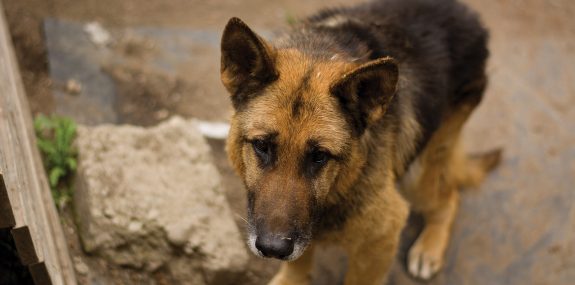It’s easy to imagine that companion animals such as cats, dogs, rabbits, and the other animals we keep as pets, have strong legal protections against cruelty and neglect in Canada. Unfortunately, this is often not the case. Some provinces have taken steps to improve their animal welfare laws and regulations in recent years, for example, Ontario’s recent PAWS Act taking positive steps towards better enforcement of animal welfare regulations, and Quebec’s change to list animals as sentient creatures instead of property in 2015 to its Civil Code. Despite recent progress, some basic measures are still missing for companion animals.
Welfare standards for companion animals are regulated provincially. While the option of prosecuting the most serious cruelty offenses under the federal Criminal Code exists, this happens fairly infrequently; the Criminal Code is notoriously outdated and difficult to use to prosecute animal cruelty offenses. In 2019, after a campaign by Animal Justice and other animal protection groups, Bill C-84 passed into law, closing loopholes in the Criminal Code related to bestiality and animal fighting. This change was a victory for animals, but did not address some of the fundamental problems with the existing law.
The continued existence of puppy mills, commercial breeding facilities which force dogs to produce litter after litter of puppies, is a disgrace in modern Canada. Breeding animals in these facilities are kept in cages, without access to regular exercise, socialization, or veterinary care. (Kitten mills exist, though they are less common.) Numerous investigations and subsequent seizures throughout Canada, particularly in Quebec, have highlighted the deplorable conditions that animals in puppy and kitten mills endure, and the lax laws that have allowed them to persist.

Puppies from commercial breeders are generally sold online or in pet stores. Thankfully, a growing number of municipalities, including Toronto, Montreal, and Vancouver, have banned the sale of dogs, cats, and rabbits from breeders, instead letting pet supply stores partner with local shelters to adopt out loving animals. However, none of these bans are province-wide, and online sales continue to go unregulated. Worryingly, exotic animals such as reptiles, some birds, and even some mammals, can be excluded from companion animal provisions, making it hard to enforce standards of care for these species.
Most provinces (vets only) have banned the cruel and unnecessary practice of declawing cats, though notably not Ontario or Quebec (bans are in place in Nova Scotia, British Columbia, Prince Edward Island, Newfoundland and Labrador, Alberta, New Brunswick and Manitoba), and some provinces have banned other cosmetic procedures such as tail docking and ear cropping (Prince Edward Island, Newfoundland, and Nova Scotia). Veterinary associations in some other provinces have prohibited their veterinarians from performing cosmetic procedures, but without formal regulations, these practices are not considered illegal.
Breed specific legislation banning pit bull-type dogs has been in place in Ontario since 2005, Winnipeg since 1990, and was briefly introduced in Montreal in 2016 before being repealed in 2018. Although breed bans are often billed as a public safety mesure, breed specific legislation fails to keep people safe, according to data from the many jurisdictions that have banned some breeds of dogs. The best way to support safe, humane communities is to have strong rules to ensure dog guardians sterilize, register, and monitor the behaviour of their animals, regardless of breed. It’s also important to ensure irresponsible people aren’t allowed to have animals—a measure that has been shown to be effective in reducing the rates of dog bites. Calgary has long served as a model for this type of progressive and effective oversight, with Montreal adopting a similar approach after ditching its much-maligned BSL bylaw.
The use of huskies by commercial dog sledding operations is incredibly problematic. The infamous 2010 mass killing of sled dogs in Whistler, BC, prompted such a wave of public outrage that the province moved swiftly to put stronger protections for these animals into provincial regulations. Despite this, the dog sledding industry remains poorly regulated. Most facilities are in remote locations and subject to infrequent inspections, if they are visited at all. Dogs are generally kept tethered or in small, barren runs almost permanently, and can be run to the point of exhaustion during busy tourist seasons.
Laws and regulations that protect companion animals in Canada are too often weak, poorly enforced, provide inconsistent coverage –– some provisions are based on ownership, for example, leaving stray animals vulnerable –– and varied between municipalities, provinces and territories, and at the federal level. These animals are part of our families and we love them dearly; it is well past time for Canada to provide them with strong legal protections backed up by rigorous enforcement.
So-called “exotic animals” in the pet trade, such as reptiles, parrots, and other non-traditional companion animals, usually aren’t afforded the same legal protections as cats and dogs under provincial laws. Further, these animals can always be traced back to wild-caught animals in the lucrative and damaging wildlife trade.




